New Zealand holds more than scenic beauty. Across its islands, every town and valley carries traces of people who shaped its story. Each of the historical places in New Zealand speaks with its own voice, from Māori ancestral landmarks to colonial relics tucked away in lush greenery. These places reveal the complex blend of traditions, resilience, and change that built the country we see today. In cities and villages, you will find quiet chapels, preserved missions, once-thriving gold towns, and striking architectural gems, all offering a connection to the past.
Top Historical Places In New Zealand
Finest sites from sacred Māori grounds to Victorian architecture and colonial settlements, each of the historical places in New Zealand carries a piece of the country’s soul.
1. Waitangi Treaty Grounds, Bay Of Islands
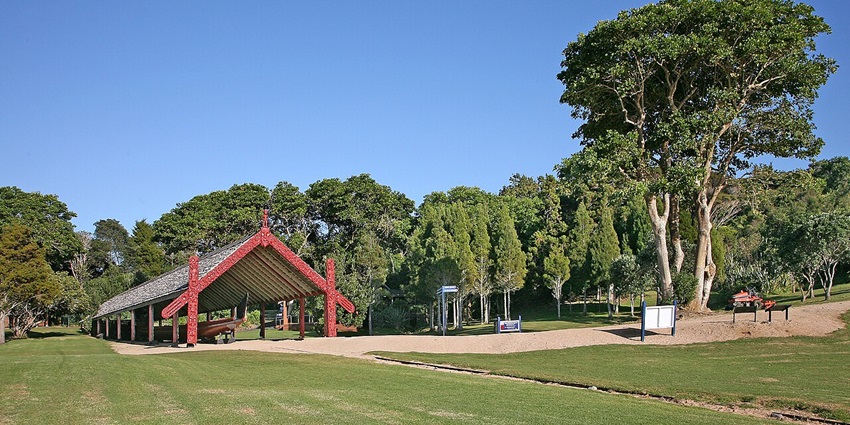
Photo: W. Bulach / Wikimedia Commons
The Waitangi Treaty Grounds are where the story of New Zealand changed direction. In February 1840, this coastal site became the meeting place of Māori chiefs and British officials who signed the Treaty of Waitangi. What remains here is not a museum behind glass but a lived site with a real atmosphere. You can stand on the same land where those chiefs stood, walk through the Treaty House where officials prepared the documents, and step into the carved Whare Rūnanga, which continues to carry the presence of iwi and ancestors.
How To reach: Fly to Kerikeri Airport, 25 25-minute drive from Paihia.
Cost: $60 for adults
Timings: 9 AM – 5 PM
Nearby attractions: Haruru Falls, Paihia Wharf, Russell Historic Village.
2. Otago Settlers Museum, Dunedin
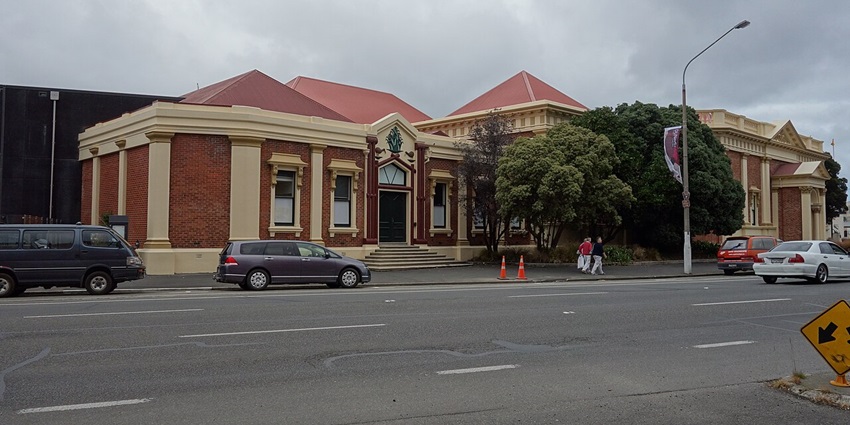
Photo: Schwede66 / Wikimedia Commons
The Otago Settlers Museum walks you through the raw and real journey of the people who arrived in Dunedin over the centuries. This historical place in New Zealand focuses on those who shaped Otago, from the first Māori communities to Scottish settlers, Chinese gold miners, and later arrivals. Personal diaries, faded portraits, and everyday objects are displayed with care but without embellishment. The museum stands near the railway station, and many visitors wander in after arriving, not realising they’ll stay for hours.
How To reach: 5-minute walk from Dunedin Railway Station.
Timings: 10 AM – 5 PM
Nearby attractions: Toitū Gardens, Dunedin Chinese Garden, First Church of Otago.
3. Larnach Castle, Otago Peninsula
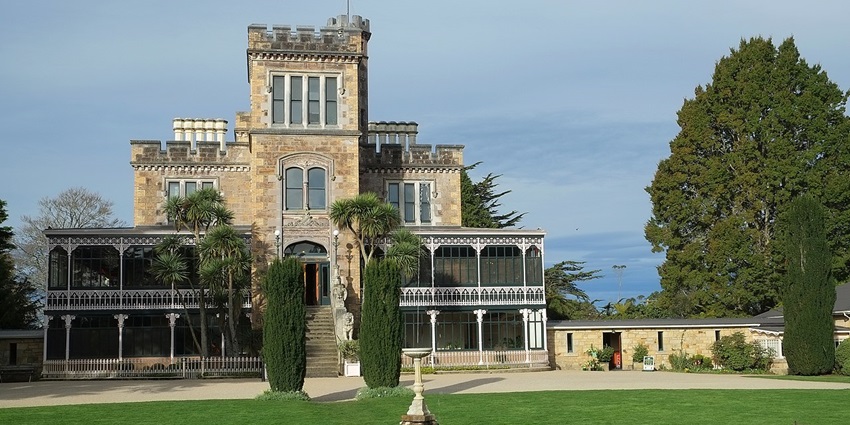
Photo: Pseudopanax / Wikimedia Commons
Larnach Castle was built in the 1870s by William Larnach, a wealthy banker and politician. This mansion stands alone in a historical place in New Zealand’s castle, perched high on the Otago Peninsula. Every room carries traces of the man who built it, the family who lived and suffered there, and the craftsmen who shaped its carved ceilings and imported materials. The ballroom, once filled with music, now hosts quiet afternoon teas. The gardens have been restored with care and recognised as of international significance.
How To reach: 20-minute drive from the Dunedin city centre.
Cost: $39 for full access (castle, gardens, and grounds).
Timings: 8 AM – 5 PM
Nearby attractions: Otago Peninsula Wildlife Tours, Glenfalloch Gardens, Sandfly Bay.
4. Stone Store & Kemp House, Kerikeri
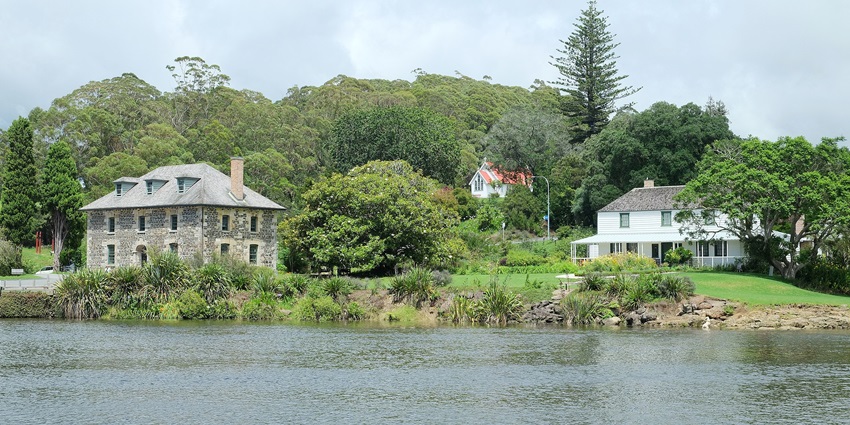
Photo: Pseudopanax / Wikimedia Commons
The Stone Store and Kemp House give a rare glimpse into early colonial life. It is the oldest historical place in New Zealand, a stone building from 1832. It was constructed to hold mission supplies and trade goods, with its thick walls reflecting a period when European influence was settling in the north. A wooden home built in 1822 by missionaries and Māori workers. This historical place in New Zealand remains closely tied to the region’s first efforts at cross-cultural living. Both structures contain original fittings, hand-cut timber, and household items used by the Kemp family who lived there for generations.
How To reach: 30-minute drive from Kerikeri Airport.
Cost: $10 for adults, children free.
Timings: 10 AM – 5 PM
Nearby attractions: Rainbow Falls, Rewa’s Village, Kerikeri Mission Station.
5. Old St Paul’s Church, Wellington
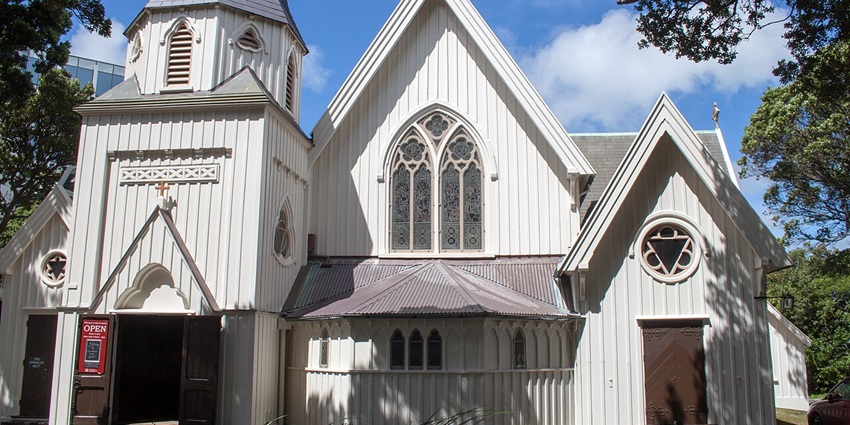
Photo: Szilas / Wikimedia Commons
Old St Paul’s stands quietly on Mulgrave Street, surrounded by office buildings and government complexes. Built entirely from native timbers in 1866, this church remains one of the finest examples of Gothic Revival wooden architecture. The stained-glass windows filter natural light reflections onto the polished kauri arches and rimu beams. This has been a part of Wellington’s spiritual and civic life for over 150 years, used for services, military funerals, and royal visits. It represents craftsmanship, beliefs, and cultural shifts of a developing capital city.
How To reach: 10-minute walk from Wellington Railway Station.
Timings: 10 AM – 4 PM (Mon-Sat).
Nearby attractions: Parliament Buildings, Wellington Waterfront, Katherine Mansfield House.
6. Arrowtown Chinese Settlement, Otago
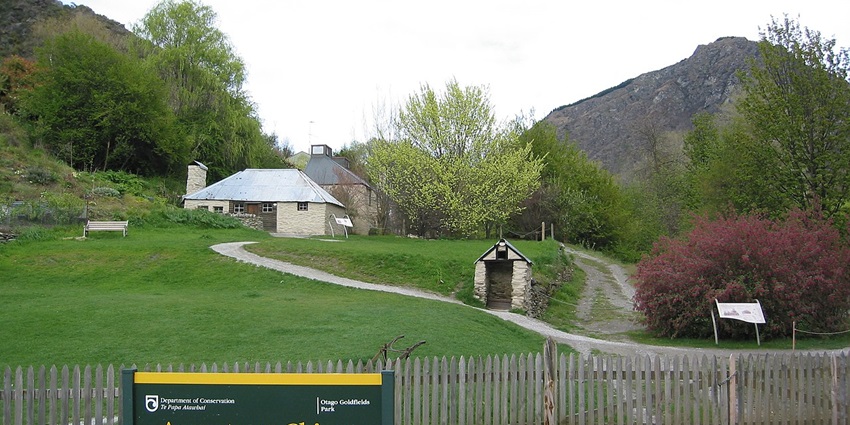
Photo: Beast from the Bush / Wikimedia Commons
Tucked into a shaded section near the Arrow River, the preserved huts belonged to Chinese gold miners who came to Otago in the 1860s. Pushed to the fringes of town, they built their homes from stone and timber while working in harsh conditions and facing open discrimination. This historical place in New Zealand holds what remains of those efforts, tiny dwellings with low roofs, uneven stone walls, and soot-stained hearths. Each structure reflects the resourcefulness of men like Ah Lum, whose restored store remains central to the site.
How To reach: 20-minute drive from Queenstown.
Timings: 24*7
Nearby attractions: Arrow River Trail, Lakes District Museum, Buckingham Street.
7. Pompallier Mission And Printery, Russell
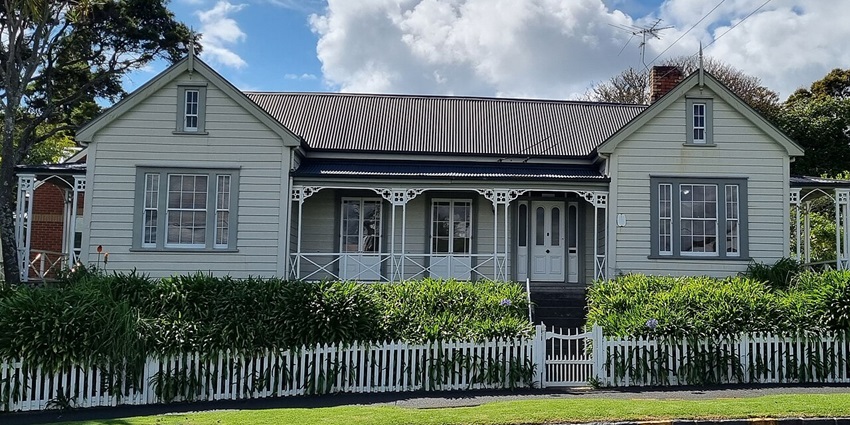
Photo: Itineris55 / Wikimedia Commons
On a quiet corner near the Russell waterfront, the Pompallier Mission and Printery is a rare example of early Catholic mission activity in New Zealand. Built in 1842 by French Marist missionaries, this two-storey structure was a printery where religious texts were translated into Māori, typeset by hand, and printed using an original Stanhope press. It is the last remaining building of the original mission compound. What sets this historical place in New Zealand apart is its rammed-earth construction, a technique brought over from France.
How To reach: Ferry from Paihia to Russell, then a 10-minute walk.
Cost: $10 for adults.
Timings: 10 AM – 5 PM
Nearby attractions: Christ Church, Flagstaff Hill, Russell Museum.
8. Monte Cecilia House, Auckland
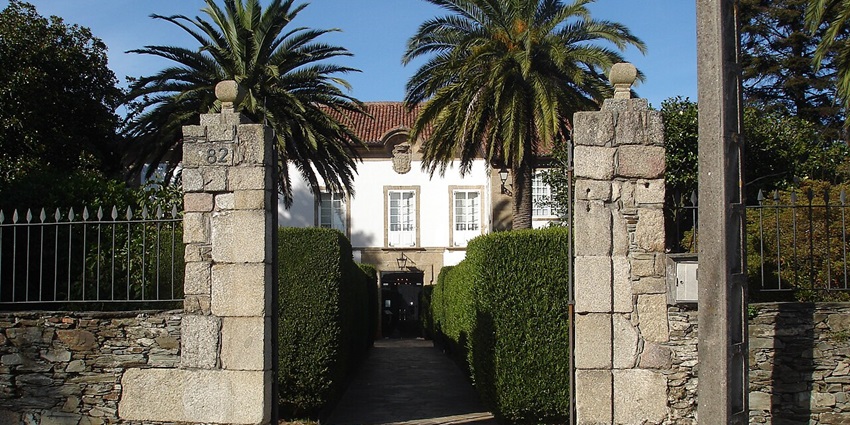
Photo: PepedoCouto / Wikimedia Commons
Monte Cecilia House began as a private mansion in the 1860s, expanded into a bishop’s residence, and later served as an orphanage and emergency housing. Set inside a wide green estate in Hillsborough, this Italianate-style building has watched Auckland’s social history shift for over a century. From the polished floors of its formal rooms to the echoes in the long upstairs halls, it tells stories of faith, hardship, and care. The building is now part of Monte Cecilia Park, and the surrounding landscape draws in families, joggers, and school groups.
How To reach: 20 minutes from central Auckland by car or bus.
Timings: 7 AM – 7 PM.
Nearby attractions: Monte Cecilia Park, TSB Bank Wallace Arts Centre, One Tree Hill.
9. Albertland Heritage Museum, Wellsford
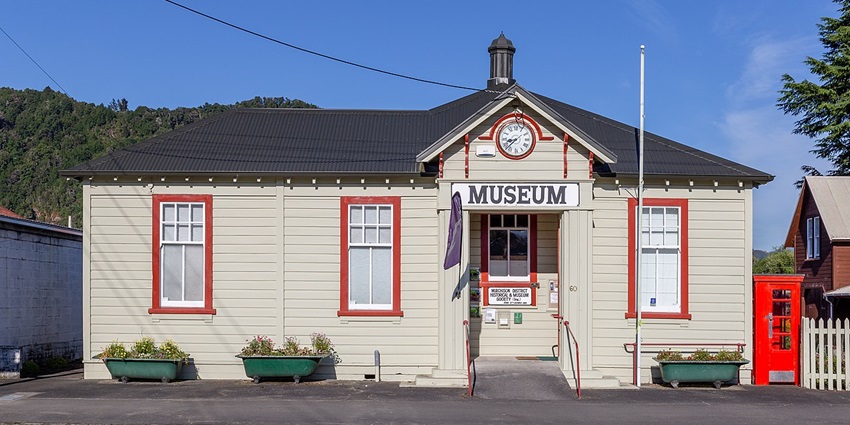
Photo: Michal Klajban / Wikimedia Commons / Image For Representation Only
The Albertland Heritage Museum has a detailed record of one of New Zealand’s lesser-known migration efforts. Hundreds of English settlers sailed to the Kaipara Harbour region, aiming to build a self-sufficient community based on nonconformist Christian values in the early 1860s. Many faced rough terrain, isolation, and limited resources. The displays include pioneer tools, household items, shipping logs, and personal letters, giving a clear look into the hopes and struggles of the Albertlanders. Photographs from the time show faces full of resolve, especially among women and children.
How To reach: 1.15 minutes’ drive from Auckland.
Cost: $5 for adults.
Timings: 10 AM – 3 PM (Wed-Sun).
Nearby attractions: Port Albert Wharf, Atiu Creek Regional Park, Kaipara Harbour.
10. Howick Historical Village, Auckland
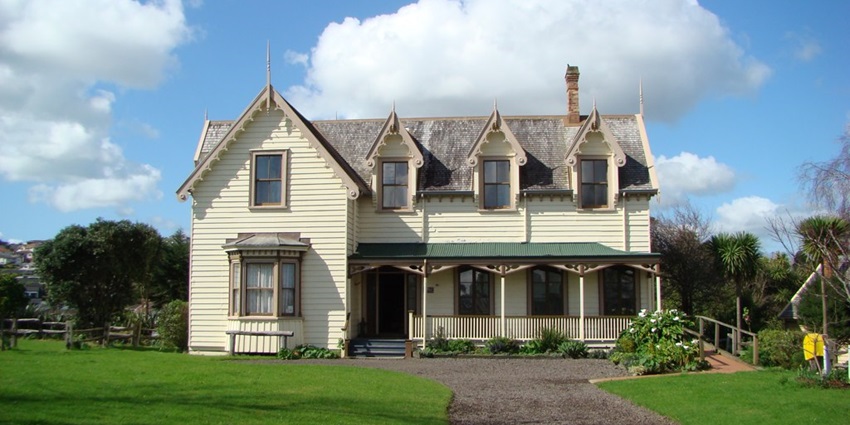
Photo: Howick historical village / Wikimedia Commons
In East Auckland, Howick Historical Village offers a detailed look at life as it was in the mid-1800s. This open-air museum is built around the history of the Royal New Zealand Fencibles, retired British soldiers who were brought to the colony in the 1840s, along with their families, to provide defence. Some structures were relocated from their original sites; others were recreated using traditional methods and materials. Inside, each space is arranged with everyday items used during that period: hand-sewn linens, farming tools, cast-iron cookware, and family portraits..
How To reach: 25-minute drive from central Auckland.
Cost: $18 for adults.
Timings: 10 AM – 4 PM (Wed-Sun).
Nearby attractions: Lloyd Elsmore Park, Pakuranga Rotary Walkway, Highland Park.
11. Denniston Historic Mine Site, West Coast
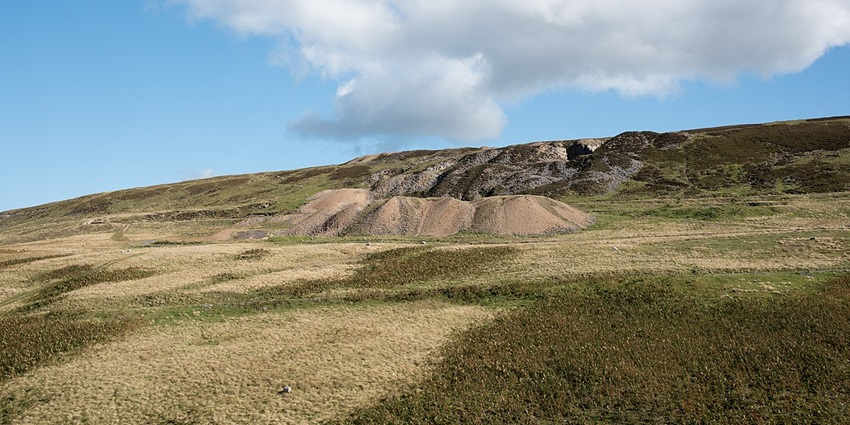
Photo: Trevor Littlewood / Wikimedia Commons
The Denniston Mine was once one of New Zealand’s most productive coal sites. Operating from the late 1800s to the mid-20th century, it supported a remote, tightly knit community that lived and worked in harsh conditions. Everything from groceries to mail had to be hauled up the steep incline, and coal was sent back down by rail using a gravity-powered brake system still considered an engineering feat of its time. Today, the original structures, rail lines, and foundations remain scattered across the plateau. This historical place in New Zealand is stark but powerful.
How To reach: 30-minute drive north of Westport.
Cost: $25 for guided tour.
Timings: 24*7
Nearby attractions: Bridle Track Lookout, Westport Beach, Coal Town Museum.
Each of the historical places in New Zealand offers more than dates and old buildings. Whether you’re standing in the halls of Larnach Castle, walking through a Chinese miner’s stone hut in Arrowtown, or looking out from the Denniston plateau, you’re stepping into real ground shaped by real people. Explore more such trips and packages offered by TripXL and discover routes that go beyond postcards and return with stories worth telling.
Cover Photo: Michal Klajban / Wikimedia Commons


 WhatsApp
WhatsApp
 Twitter
Twitter









